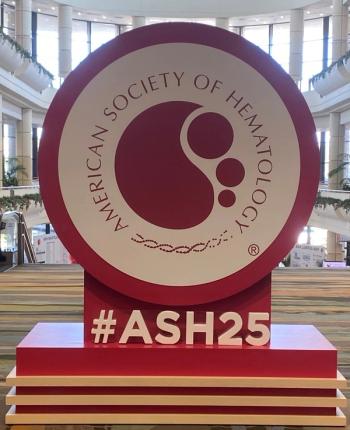
Is a New Era of SCLC, LCNEC Treatments on the Horizon?
Emerging therapies, including antibody-drug conjugates and biomarker-driven approaches, have the potential to significantly impact outcomes for patients with traditionally poor prognoses and limited options.
The convergence of immunotherapy, targeted agents, and biomarker-driven approaches to treatment is actively reshaping the therapeutic landscape, holding potential to improve outcomes for these patients, highlighted the researchers.
“Recent years have seen unprecedented advancements in drug development, offering new hope for neuroendocrine lung cancers—diseases that have historically seen little progress in therapeutic innovation,” described the authors.
One of the most significant developments has been the targeting of delta-like ligand 3 (DLL3), a protein highly expressed in both SCLC and LCNEC. Tarlatamab (Imdelltra; Amgen), a DLL3-targeting bispecific T-cell engager (BiTE),
The BiTE is currently being assessed in several phase 3 trials, including DeLLphi-304, DeLLphi-305, and DeLLphi-306. These trials aim to assess tarlatamab both as a monotherapy and in combination with the PD-L1 inhibitor durvalumab (Imfinzi; AstraZeneca), in previously treated and maintenance settings.
Investigational DLL3-targeting agent obrixtamig demonstrated an ORR of 25% in early trials, with notable activity in patients with LCNEC.1 The trispecific T-cell engager gocatamig has also shown promise, showing an ORR of 52% in extracranial disease and 37% in patients with brain metastases. The novel mechanism of action of these investigational treatments leverages the immune system's cytotoxic potential, with safety profiles that are actively being studied.
Beyond DLL3, researchers are exploring the role of DNA repair inhibition in SCLC. PARP inhibitors such as Olaparib (Lynparza;AstraZeneca and Merck) and talazoparib (Talzenna; Pfizer), when combined with immune checkpoint inhibitors (ICIs), have shown variable efficacy in clinical trials. The TRIDENT study, which evaluated durvalumab and olaparib following platinum-based chemotherapy, reported a median progression-free survival (PFS) of 5.8 months. In contrast, the MEDIOLA study found modest benefit in relapsed SCLC, with a median PFS of just 2.4 months.
Research has suggested that response to PARP inhibitors may be influenced by the expression of Schlafen11 (SLFN11), a biomarker associated with replication stress, highlighting the utility of biomarker-driven treatment decisions. In the SWOG S1929 trial, SLFN11-positive patients treated with atezolizumab plus talazoparib experienced improved PFS (4.2 months) compared with those receiving atezolizumab alone (2.8 months).
Antibody-drug conjugates (ADCs) represent another innovative strategy under investigation. ABBV-706, targeting SEZ6—a protein upregulated in platinum-resistant SCLC—showed a 40% ORR in a phase 1 trial. Hematologic toxicities, such as neutropenia and anemia, were common but manageable. Meanwhile, a series of anti-DLL3 ADCs, including FZ-AD005, DB-1314, and ZL-1310, are in preclinical or early clinical development, each utilizing different cytotoxic payloads and linker technologies to enhance tumor specificity and reduce off-target effects.
The pipeline of therapeutic innovation extends beyond monotherapies. Investigational agents are increasingly being studied in combination with ICIs, chemotherapies, and other immuno-oncology agents to overcome resistance and prolong survival. Trials like ARTEMIS-001 and TRINITY exemplify the push for more potent regimens in refractory SCLC.
In parallel, improved understanding of the molecular heterogeneity within SCLC and LCNEC is helping refine patient selection. For example, LCNEC subtypes defined by TP53/RB1 versus STK11/KEAP1 mutations may predict differential responses to targeted therapies, underscoring the need for comprehensive genomic profiling.
"Emerging therapies, including immune checkpoint inhibitors and antibody-drug conjugates, hold the potential to significantly impact SCLC treatment, a shift not observed in decades," the authors concluded. "Furthermore, there has been growing interest in implementing targeted therapies in the treatment landscape of LCNEC. However, challenges such as drug resistance and the need for reliable biomarkers persist, underscoring the importance of continued research to fully realize the benefits of these promising therapies. As our understanding of SCLC biology deepens, there is a growing opportunity to bring personalized, effective treatments into clinical practice, ultimately improving patient outcomes."
References
1. Lim SM, Shim JS, Shim HS, et al. What is on the horizon for the diagnosis and treatment of small-cell lung cancer and large-cell neuroendocrine cancer? JTO Clin Res Rep. Published online June 28, 2025. doi:10.1016/j.jtocrr.2025.100871
2. FDA approved Imdelltra (tarlatamab-dlle), the first and only T-cell engager therapy for the treatment of extensive-stage small cell lung cancer. News release. Amgen. May 20, 2024. Accessed July 11, 2025.
Newsletter
Stay ahead of policy, cost, and value—subscribe to AJMC for expert insights at the intersection of clinical care and health economics.













































